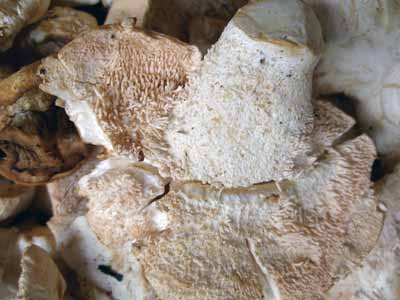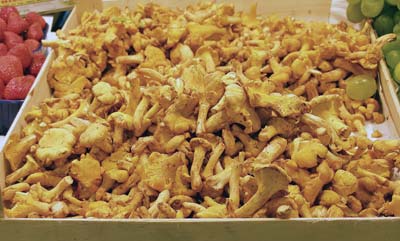
Hedgehog fungus. Cream-coloured mushrooms, excellent to eat, easily found in woods from late summer to late autumn (US: fall). They have a sort of downy white stem leading up to a cap which is centrally depressed and under which are masses of little spines, giving the mushroom its English name. It is quite a good mushroom to collect as it is easily distinguished from other mushrooms, is a relative of the chanterelle, and, like it, has good flavour and good retention of texture on long cooking.

Grey chanterelles. Fluted, trumpet-shaped, wild mushrooms with a ruffled edge, dark grey to black in colour. They are commonly found under pine, beech or birch trees from July until the first frosts and thrive in wet summers. They are usually sautéed in butter with chopped onions, but are not considered as tasty as the horn of plenty, which they resemble.
Grisette. A slender mushroom of the amanite family with a pale grey, ribbed cap, mild scent and flavour. It must be eaten well cooked or it will cause gastro -intestinal problems.
Powdery brittlegill. A variety of wild mushroom, ranging in colour from blue to light green or grey. Most brittlegills resemble other ones that are inedible and some will cause gastric problems. You can normally detect what type it is by the flavour. A tiny tasting will immediately reveal whether or not it is edible, but it is worth spitting it out immediately if you detect a bitter taste.